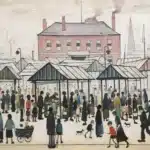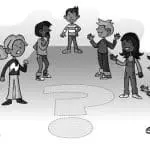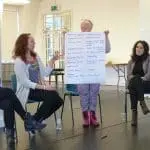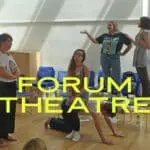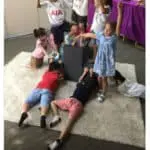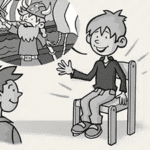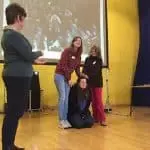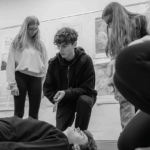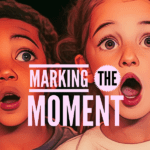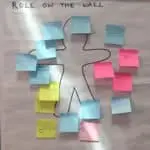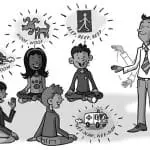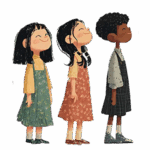Storytelling is one of the simplest and perhaps most compelling forms of dramatic and imaginative activity. A good place to start is by telling stories to your pupils and encouraging them to share stories with one another. All of us can become engaging storytellers with a little practice. There may also be members of staff who are particularly skilled at telling stories, or you could invite a professional storyteller (such as Hugh Lupton in the video below) into the school. Listen to each other, watch videos of storytelling and encourage the children to identify techniques they could use in their own stories.
Rather than learning stories by rote pupils should identify key images and important moments, and retell the story in their own words. Freeze frames can be used to mark out those key moments, as can drawing storyboards and story maps or (for younger children) sorting pictures into the right order. It is well worth playing some games to develop oral skills and get the creative juices flowing. These can help to develop vocabulary, story- making and storytelling techniques.
Important storytelling techniques include the use of voice (words and sound effects), facial expression and bodily gesture, mime, pace, repetition, rhythm, elaboration, exaggeration and – most of all – engagement with the audience. Begin with some word association games like Word Tennis (see below) and One word at a time stories.
In this word-association game, pupils have to keep thinking up words in a chosen category and ‘bat’ them to each other. Whoever repeats a word or can’t think of one is out, and somebody else takes his or her place. You can demonstrate with two students and then play it in pairs or teams of four or five students. Each team should form a line facing another team. The two students at the head of each line play each other until one of them can’t think of a word – or repeats an earlier word. That person goes to the back of the line and the next student takes their place.
Categories can include colours, fruit, sea creatures, flavours of ice cream, fairy tale characters, sports, capital cities, adverbs, adjectives and so on. Change the categories as often as you need to maintain interest. Students will soon come up with their own interesting suggestions for new categories.
Further ideas, games and activities for using storytelling across the curriculum can be found in the book Learning Through Drama in the Primary Years by David Farmer.

